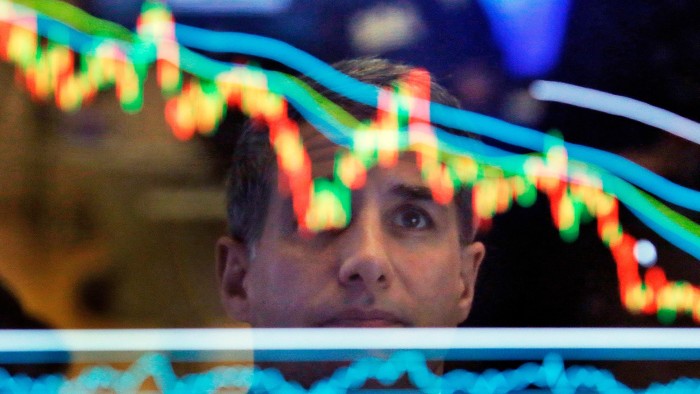Stay informed with free updates
Simply sign up to the Fund management myFT Digest — delivered directly to your inbox.
Investors are fleeing long-term US bond funds at the swiftest rate since the height of the Covid-19 pandemic five years ago as America’s soaring debt load tarnishes the appeal of one of the world’s most important markets.
Net outflows from long-dated US bond funds spanning government and corporate debt have hit nearly $11bn in the second quarter, according to Financial Times calculations based on EPFR data.
The second-quarter exodus is on track to be the biggest since severe market turbulence in early 2020, and marks a powerful shift from the average inflows in the previous 12 quarters of about $20bn.
The redemptions from long-term bond funds, which are widely used by institutional investors, come at a time of growing jitters over America’s fiscal path. Fund flows capture only a sliver of the vast US bond market, but they provide a proxy for investor sentiment.
“It’s a symptom of a much bigger problem. There is a lot of concern domestically and from the foreign investor community about owning the long end of the Treasury curve,” said Bill Campbell at bond-focused investment firm DoubleLine, referring to the funds flows.
President Donald Trump’s “big, beautiful” tax bill, which is under consideration in Congress, is forecast by independent analysts to add trillions of dollars to US debt over the next decade, something that would force the Treasury department to sell a huge amount of bonds. The White House has countered that tariffs and higher growth would cut the debt.

At the same time, market participants are bracing themselves for the administration’s tariffs on major trading partners to stoke higher inflation, one of the biggest scourges for bond investors.
Lotfi Karoui, chief credit strategist at Goldman Sachs, said that the outflow “reflects concerns over the longer-run outlook for fiscal sustainability”.
“It’s a volatile environment, with inflation still above target and heavy government supply as far as the eye can see,” added Robert Tipp, head of global bonds at asset manager PGIM, referring to the Federal Reserve’s 2 per cent inflation goal. “This is driving a skittishness about the long end of the yield curve, and a general uneasiness.”
Longer-dated bonds are particularly sensitive to inflation, because higher growth in prices erodes the value of fixed interest payments paid over long periods of time.
The jitters have also been reflected in the price performance of long-term US debt, which has fallen about 1 per cent this quarter, clawing back steeper losses after Trump’s April tariff announcements spooked markets, according to a broad Bloomberg index.
By contrast, money has continued to pour into funds that hold US bonds maturing in the near future — with more than $39bn flooding into short-dated strategies this quarter, EPFR figures show. These funds are paying juicy yields since the Fed has held short-term rates at elevated levels this year.
Andrzej Skiba, head of BlueBay US fixed income at RBC Global Asset Management, added that investors might opt to diversify their bond holdings more internationally at this point, but “we don’t think it’s the end of the Treasury market, and the role of Treasuries as a core holding in global fixed income portfolios”.
Still, he said market participants could start demanding “more compensation to invest further out the curve” when it comes to buying new Treasury bonds. “Even though we don’t see an earthquake coming, you could see tremors.”








